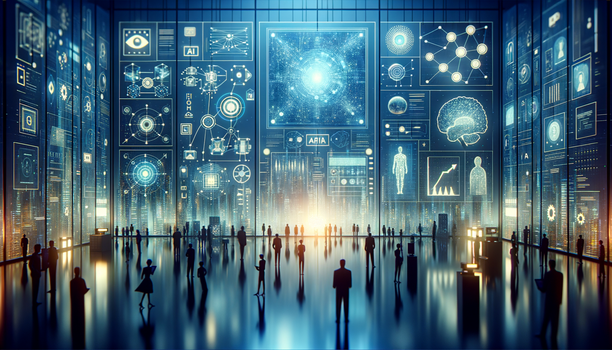
ChatGPT drone choreography algorithm: Creating expressive drone ballets
Letztes Update: 10. Mai 2024
TUM professor uses ChatGPT to turn high-level artistic cues into flight-safe drone trajectories. The method combines language-based planning, constraint-aware optimization and human review to speed choreography and ensure safe, expressive aerial shows.
Revolutionizing Robotics: TUM Professor Utilizes ChatGPT for Drone Choreography
Introduction to a Groundbreaking Approach
In a remarkable fusion of artificial intelligence and robotics, Professor Angela Schoellig from the Technical University of Munich (TUM) has pioneered the use of ChatGPT in choreographing aerial performances by drone swarms. This innovative approach not only enhances the aesthetic appeal of drone displays but also introduces a new dimension to robotic capabilities and safety.
The Role of ChatGPT in Drone Choreography
ChatGPT, primarily developed for generating human-like text, is now taking a leap into the world of robotics. Under the guidance of Prof. Schoellig, ChatGPT is tasked with creating complex choreographies for drones, synchronized to specific pieces of music. This task involves intricate spatial and temporal coordination, ensuring that the drones move harmoniously without colliding.
Enhancing Safety with a Specialized Algorithm
To address the inherent risks of mid-air collisions, a specialized safety algorithm has been integrated with ChatGPT. This safety filter meticulously adjusts the proposed flight paths, allowing for even diagonally opposing drones to cross paths safely. The result is a seamless and safe aerial ballet performed by the drones, which would be nearly impossible to achieve through manual programming alone.
SwarmGPT: A Comprehensive Solution
The combination of ChatGPT and the safety algorithm has been aptly named SwarmGPT by Prof. Schoellig. This system not only generates the choreography but also serves as an interface between the human operator and the robotic performers. With SwarmGPT, individuals without deep technical knowledge can orchestrate complex drone shows, democratizing the technology.
Quantum Leap in Choreography Development
Reflecting on the past, Prof. Schoellig recalls the early days of drone research, where developing a single choreography could take years. Today, thanks to ChatGPT, creating a choreography for a short musical clip with three drones takes merely five minutes. This dramatic reduction in time and effort marks a significant advancement in the field of robotic choreography.
ChatGPT as an Interface for Non-Experts in Robotics
The success of SwarmGPT raises an intriguing question: Can ChatGPT serve as a universal interface for various robotic applications? Current experiments with robots performing tasks like grabbing objects or laying cables show varying success rates. However, the potential for improvement and wider application is vast, suggesting that ChatGPT could soon become a standard tool for interacting with different types of robots.
The Broader Impact and Future Prospects
The work being done at TUM extends beyond the confines of the laboratory. It has the potential to influence various sectors including entertainment, surveillance, and emergency response, where coordinated drone operations could be crucial. As the technology matures, we can expect to see more robust applications, making drone swarms more common in both industrial and creative fields.
Conclusion: A New Era in Robotics
The integration of ChatGPT in drone choreography by Prof. Angela Schoellig and her team at TUM is not just a technical achievement; it is a step towards a future where the boundaries between technology and creativity are blurred. This innovation paves the way for more intuitive human-robot interactions and highlights the potential of AI in enhancing robotic performance and safety. As we move forward, the synergy between AI and robotics promises to unlock new possibilities that we are just beginning to imagine.
Diese Artikel könnten dich auch interessieren
Exploring the intersection of technology and creativity, the use of AI, like ChatGPT, in choreographing dances with flying robots is a fascinating development. This integration of advanced algorithms with robotic technology opens new avenues for performance art and technical innovation. Similarly, the AI-powered computer vision partnership is another example of how AI is being leveraged to enhance and transform industries by providing smarter, more efficient technological solutions.
Moreover, the application of AI isn't limited to just creative fields or basic functionalities. It extends to complex systems and infrastructures, as seen in the Supermicro Edge AI IoT Solutions. These solutions utilize AI to streamline processes and improve the efficiency of Internet of Things (IoT) applications, which is crucial for managing and operating robotic systems like those used in AI-driven choreographies.
Lastly, the blending of AI with blockchain technology is revolutionizing various sectors, including how we perceive and implement robotic choreography. The AI Blockchain Integration Future at aelf highlights a future where these technologies converge to enhance security, efficiency, and reliability in operations, which could also benefit the artistic applications of robotics, making performances not only spectacular but also more interactive and secure.
